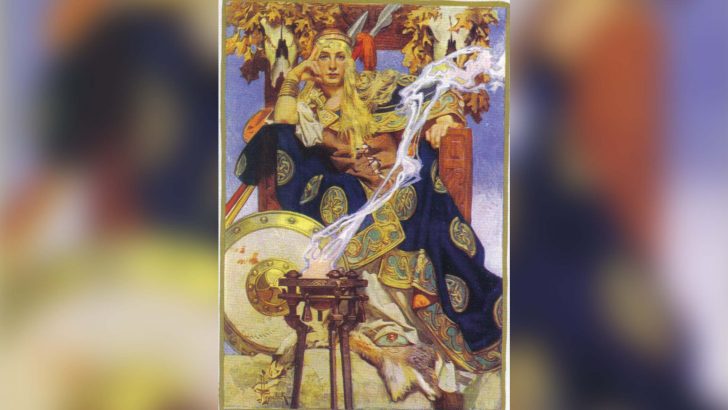The Celtic Myths that Shape the Way We Think
by Mark Williams (Thames & Hudson, £20.00/$23.99)
This book ought to have a wide readership for it explores an area of modern literature that has, since the mid-Victorian era, exerted great influence over writers, artists and filmmakers in these islands.
Mark Williams was born in London and is now a professor in Oxford University specialising in Celtic and medieval English literature. Yet a scholar who admires Macpherson, the over creative author of the lays of Fingal, will wrinkle a few brows among the Celtic experts at Irish universities who are the heirs of those who have denounced Macpherson himself in the firmest of terms since the 18th Century (whatever his influence on Napoleon and Mendelssohn).
The book has some faults, I think. The index could have been made much fuller, given the wide variety of material covered. Though there is a further reading list, a small amount of annotation of sources would not have been amiss.
But a greater disappointment, especially in a book from this publisher famed for their art books, is that though there are many interesting and relevant illustrations from modern artists with Celtic enthusiasms of several kinds, they are not discussed in any detail.
They needed a separate section of extended captions giving an a-z of their iconography for those readers concerned with the treatment of Celtic cultures in 19th and 20th Century art. An opportunity to expand on the literary themes of the chapters has been lost.
Survey
Yet the book provides an excellent survey of many literary works which makes it immensely valuable – especially to students. Though in some cases, with authors I am familiar with, such as T.H. White, his comments seem to miss the nature of what the writer was attempting.
On the whole Mr Williams intends the book for younger millennials and members of ‘Generation Z’, than the age cohort to which this reviewer belongs.
However the author himself provides a succinct epitome of what the book attempts which is worth quoting in case I may seem to be doing this book an injustice with some of these comments.
“People often go to Celtic myth looking for authenticity – a sense of identity and connection,” he writes. “But, as this book has endeavoured to show, Celtic myth is not a seamless garment woven in pagan antiquity and handed down to us as whole cloth…
“My main assertion in this book has been that going in search of Celtic mythology means encountering medieval Celtic literature and history: the myth is embedded in actual texts, the provenance and context of which cannot be ignored…
“So while it seems certain that many medieval Irish and Welsh stories contain some ancient myth, it is likely that many mythic elements have been radically shifted around and altered, because the material has been passed down in a rich Christian story-telling tradition for the attention of a courtly audience or a warrior aristocracy…But this does not reduce the value of these extraordinary stories – and that brings me to my final point.
“For all their complex and composite origins, these tales…form patterns of plot, character and that which possess an intrinsic and satisfying sense of rightness…It has been my contention in this book that contemporary pop culture puts us in a better position to appreciate some aspects of these stories than was the case for the enthusiasts of a century or more ago, such as Yeats…
“These stories are neither as mystical nor as far from us as they have been thought to be, and they have the potential to act as a rich resource for new creative ventures in years to come.
“With a little commentary, the Celtic stories told in this book are as open to our common experience and empathy, and to our capacity to be entertained, as they were for their original audiences in the Middle Ages. It is time to reclaim the myths from the mists.”
Identity
This is indeed what the book does. Yet I suspect those of his readers who derive their identity in part from the cultures of the ‘Celtic fringe’ that gave rise to these stories may feel that there is some kind of ‘cultural appropriation’ going on here.
There is little sense here that as these sagas were recovered during the second half of the 19th Century they drove national political revivals in these lands, which tended and still tend to drive them apart from the English worldview which envelops this book.
For people in Ireland, Scotland, and in Wales, the trend, in years rather than decades, is to dissolve the United Kingdom. Boris Johnson may not want this, but he is perhaps helpless to stop it.


 Peter Costello
Peter Costello Queen Maeve
Queen Maeve